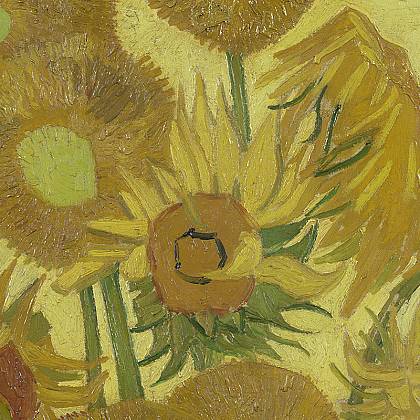Body scan
Sunflowers
Van Gogh deliberately chose to paint his famous Sunflowers in multiple shades of yellow. But is the paint still as radiant as it was when the work was first completed?
Not entirely. Artificial light and day light can cause colours to change. And Sunflowers is 130 years old. Scientists recently studied the materials used to create the painting. Thanks to the latest research techniques, they were able to identify the precise composition of Van Gogh’s paints. They also discovered where he used them in his painting.
Experts then reconstructed his paints and carried out ageing tests on them. The results showed that nuances of colour in Sunflowers have been partially lost over time. This can be observed in the fading of a particular type of red paint and the darkening of one type of yellow paint.
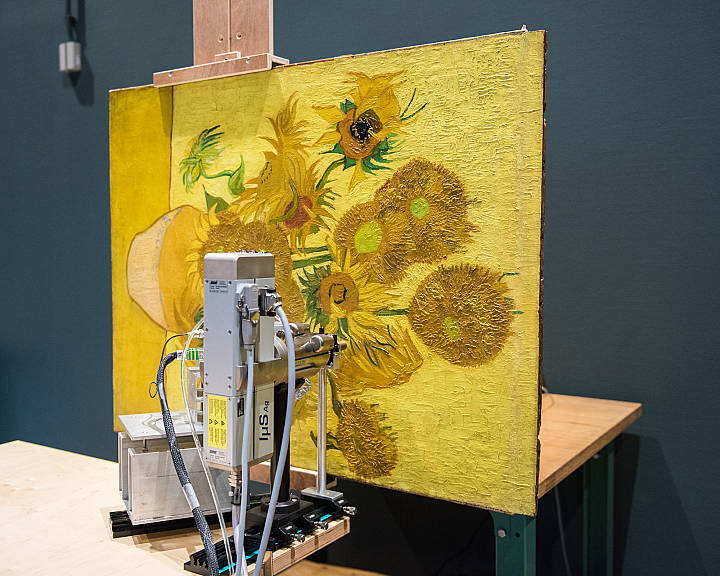
Sunflowers having a ‘body scan’.
The materials used to make a painting age over time. This can sometimes affect the way the work looks. Thanks to technical analysis, we have known for a while that some of Van Gogh’s paints were more stable than others.

Macroscopic X-ray fluorescence spectrometry (MA-XRF) scanning allows researchers to identify which chemical elements are present in the painting non-invasively (without having to take physical samples). They can then identify the pigments.
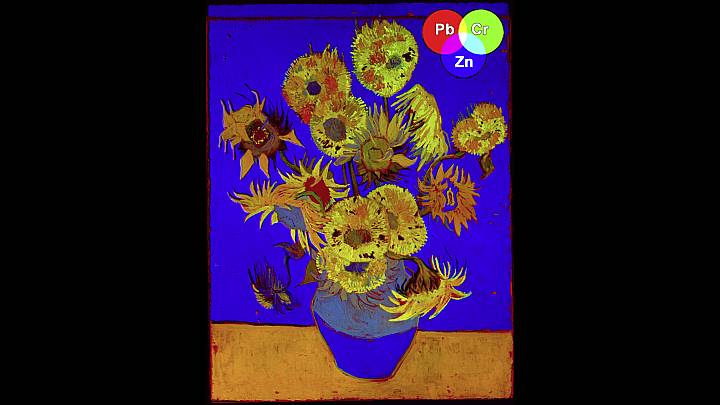
The MA-XRF scan of Sunflowers made it possible to map the distribution of the pigments across the surface of the painting.
Composite MA-XRF image. This picture shows the location of paint containing lead (Pb), chromium (Cr) and zinc (Zn). The yellow paint used for the flowers and the table top contains high levels of chromium. Van Gogh also used zinc white in the background.
"Nothing but Sunflowers in a yellow earthenware pot. Painted with the three chrome yellows, yellow ochre and Veronese green and nothing else."
- Vincent van Gogh to Arnold Koning, on or about 22 January 1889.
Darkening of chrome yellow
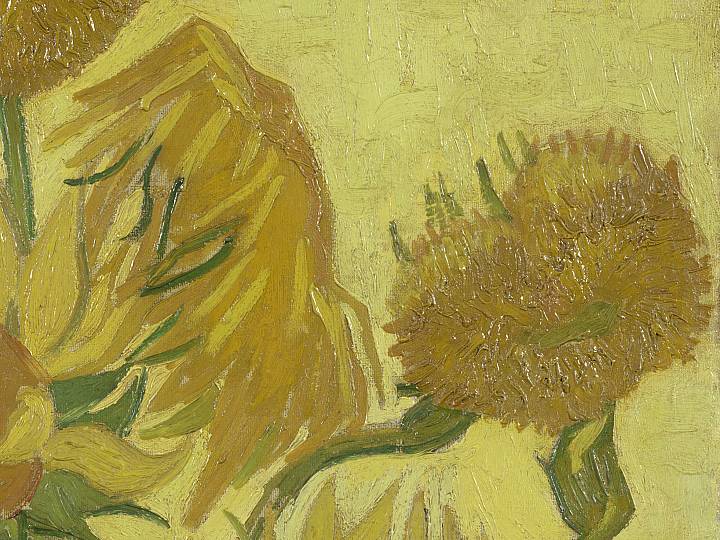
Van Gogh used three types of chrome yellow for his Sunflowers. These have darkened somewhat over the years, especially the one with which he painted the flowers and the table top.
Hypothesis in paint

Experts replicated the paint with which Van Gogh worked and used it to reconstruct part of the painting. The fresh paint in this reconstruction is more orange in colour. It is probably close to the original colour of Sunflowers when it was first completed. The reconstruction is, however, still only a ‘hypothesis in paint’.
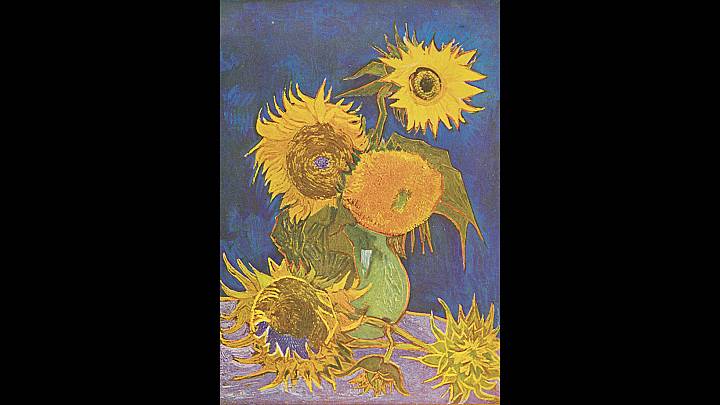
The more orange tone of the ‘fresh’ chrome yellow is also visible in an old colour photograph of one of Van Gogh’s first Sunflowers paintings. This version was destroyed during the Second World War. The flowers in the picture are bright orange.
Vincent van Gogh,
Still Life: Vase with Five Sunflowers, 1888.
Lost in the Second World War
